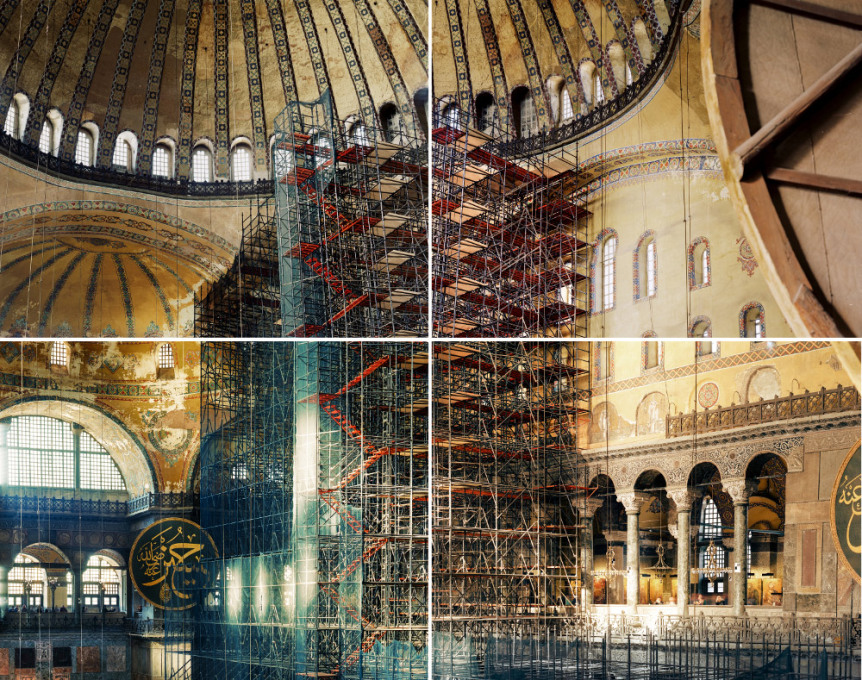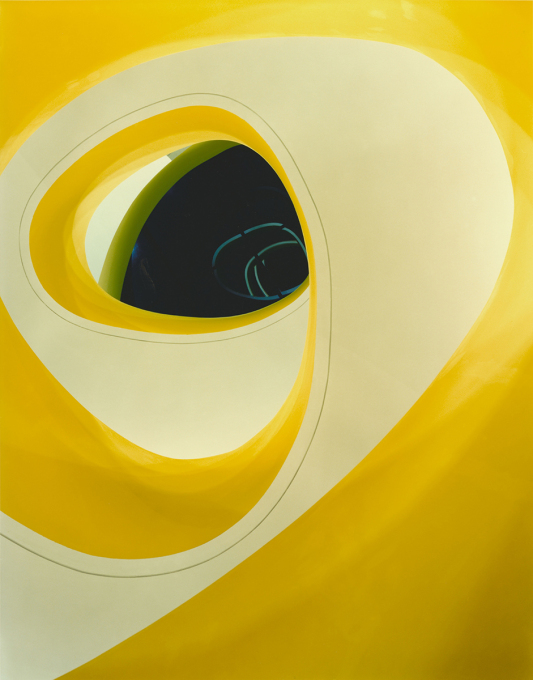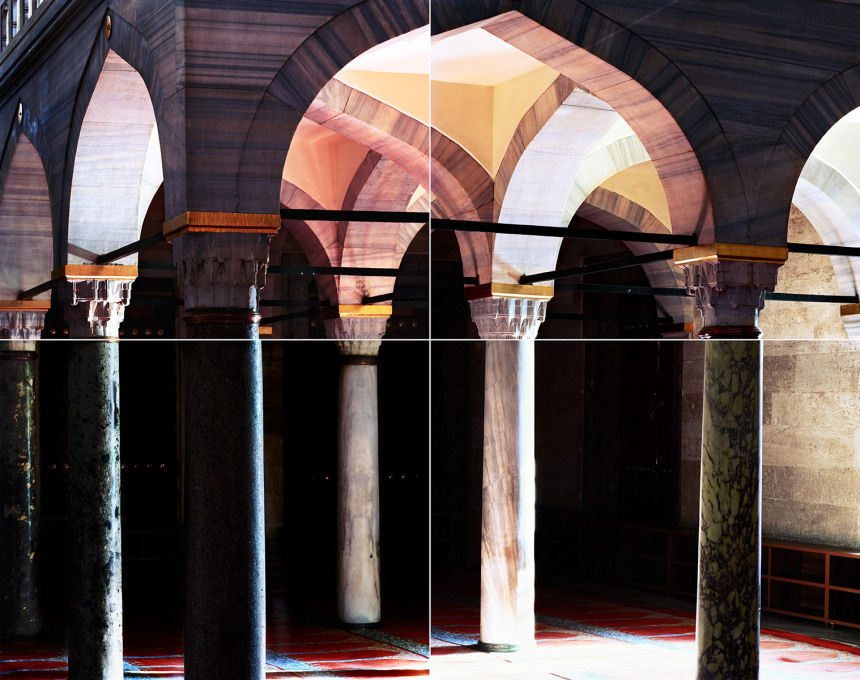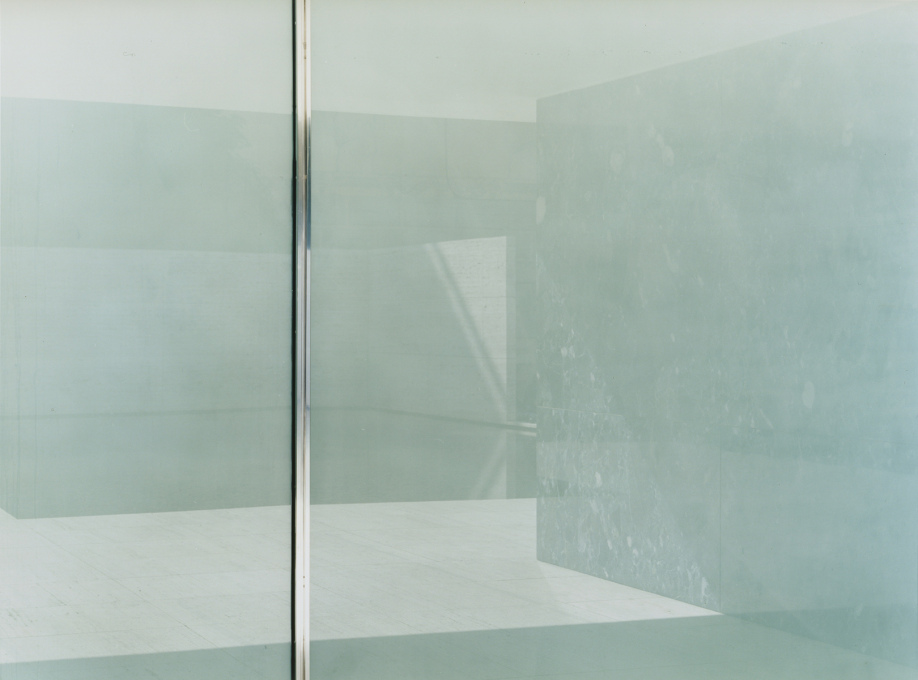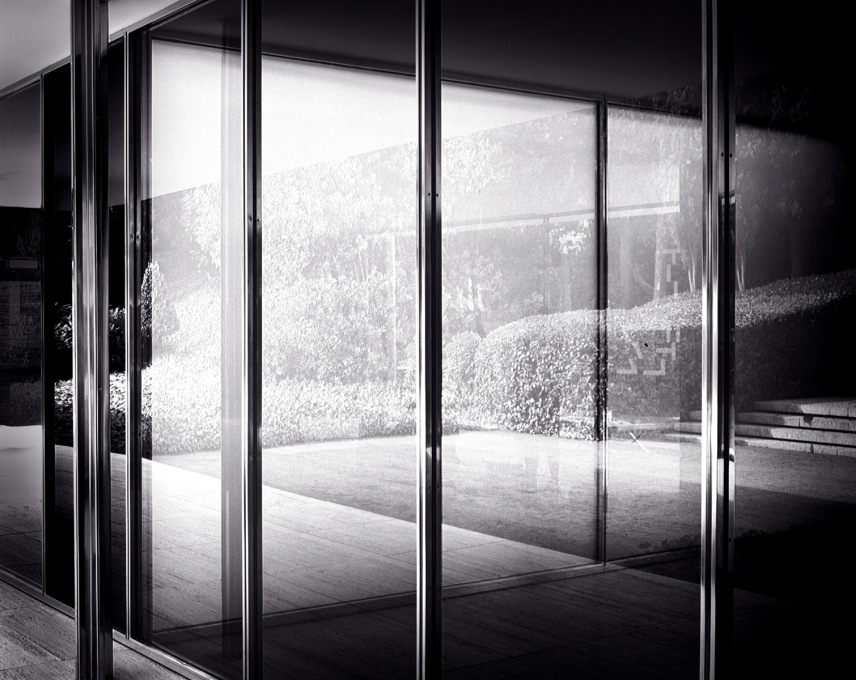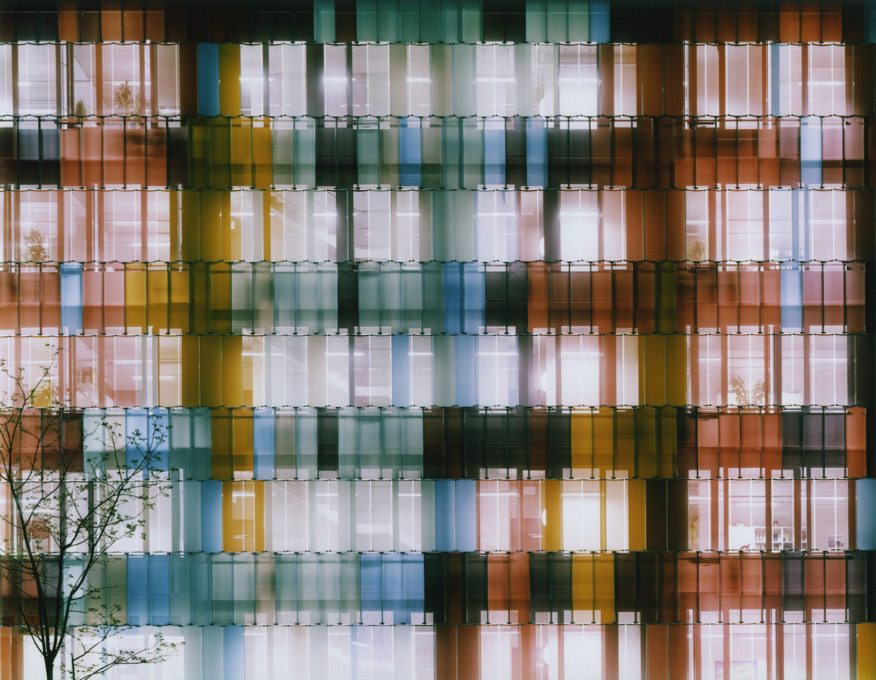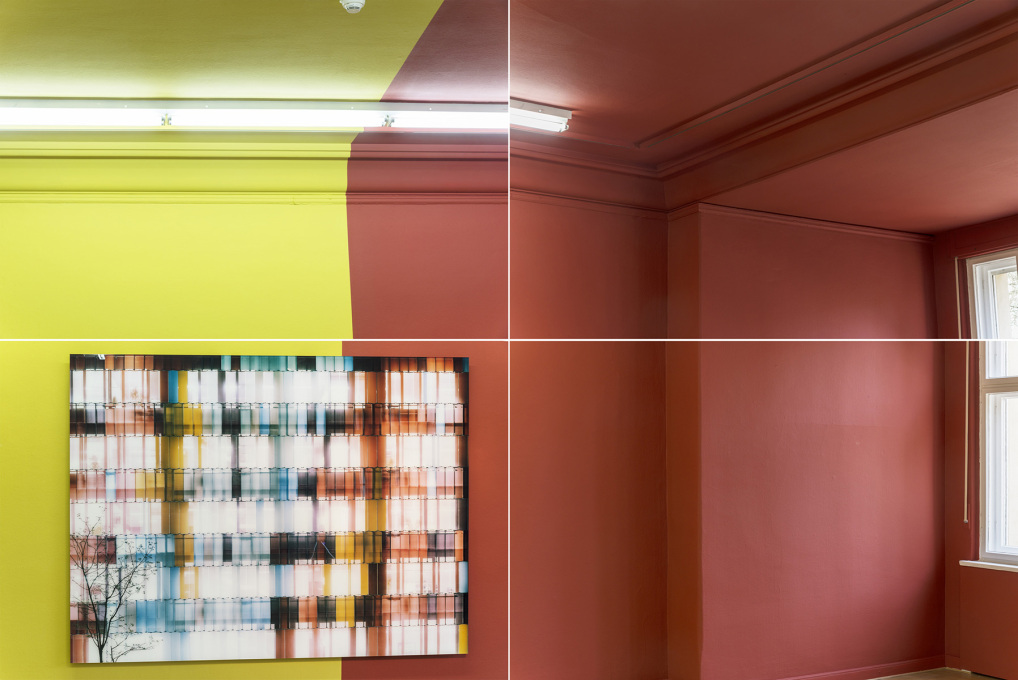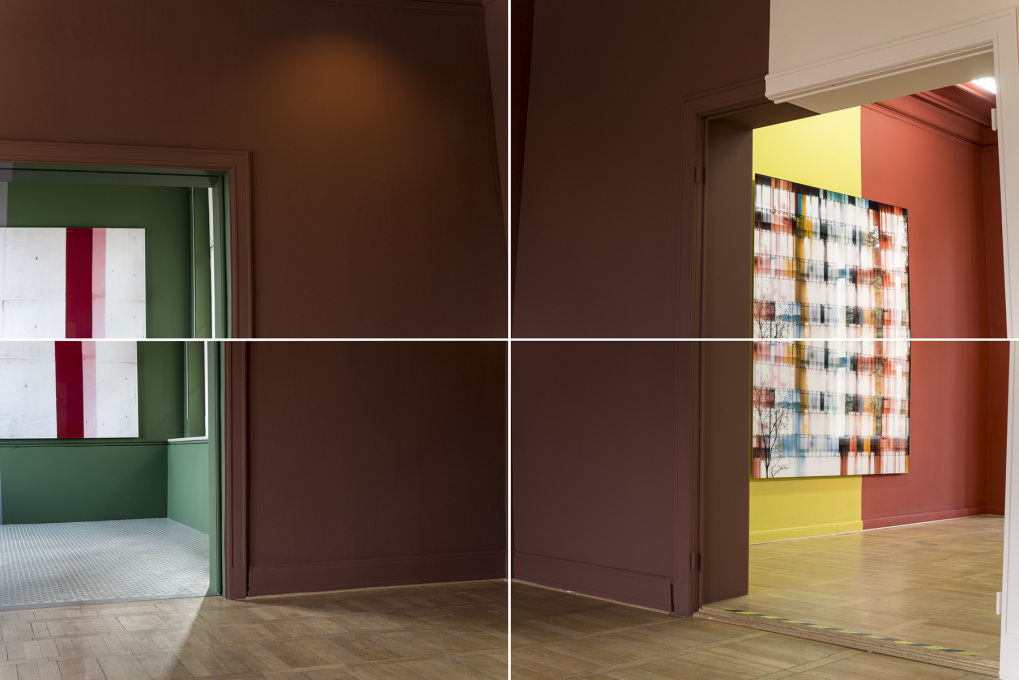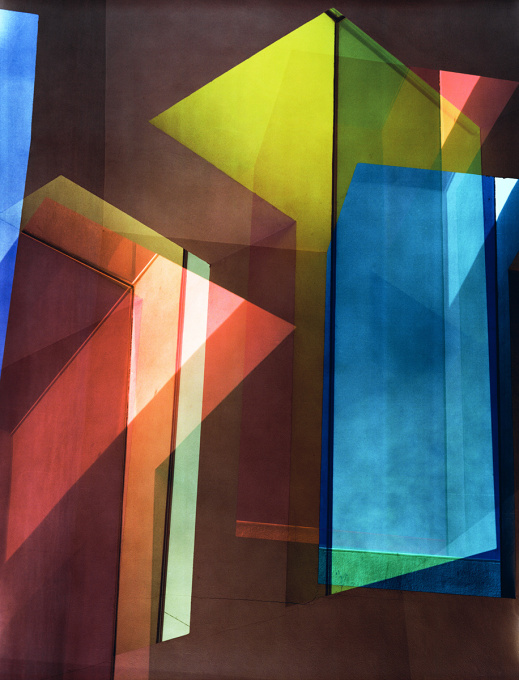The Finnish artist Ola Kolehmainen, who lives and works in Berlin, is well-known for his large format photographic work which takes architecture as its subject. This year marks a decade since he began working with the Berlin-based architects Sauerbruch Hutton, after their introduction to one another – co-incidentally by uncube’s editor-in-chief Sophie Lovell. On the occasion of a new exhibition at the Haus am Waldsee in Berlin, with a colour installation by Sauerbruch Hutton, Kolehmainen talked to uncube’s Rob Wilson about the background to his latest work from recent trips to Spain and Istanbul. And both he and Louisa Hutton of Sauerbruch Hutton talk about their close collaboration on the exhibition.
Over the last few years, your work has focused on the exterior surfaces of buildings, their façades and material skins. But in your new exhibition at the Haus Am Waldsee, your work exhibits a shift in focus, to both specific buildings and to interior spaces too.
Ola Kolehmainen: Of course, I’ve always been interested in space – which the focus on façades took me away from. But there’s has been a change of approach in my work recently. My interest has grown in who the architect is, their relationship to a tradition and their legacy, the influence of artists and architects on each other through history
I have also started to go inside, which meant I had to develop a new language of working. If I worked in the same way as I had been working with façades it would have appeared a kind of documentary architectural photography. So I began looking at the possibilities of the negative image, and also of multiple views composed on a single negative. This work developed while I was in Spain. It is both working with the space but altering it by means of the medium which is photography: similar to the Bauhaus’ experiments with multiple exposures.
The series of smaller works from Spain, Geometric Light, after which the exhibition is titled, have an intense coloured abstract sense to them, which has been compared to constructivist paintings or those of František Kupka.
OK: Well I haven’t studied those guys’ work yet, but I’ve realised there is a relationship. My influences have always more been coming from the minimalists and colour field painting, but there are always these cross connections coming in...
What is striking is the range of different ways of looking represented in the works you are showing. For instance in the new work from Istanbul, such as the amazing images of the Hagia Sophia, with that extraordinary scaffolding sitting in the centre of the space, the works are divided in four, with each quarter taken from a shifted viewpoint.
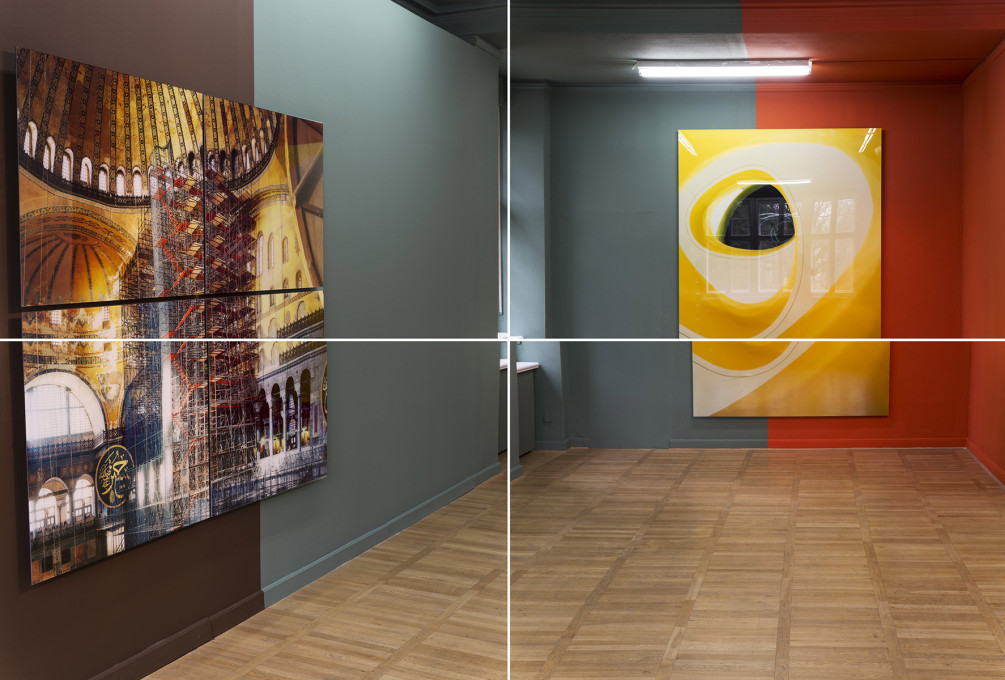
OK: Yes, with that, after each exposure, either I shifted the viewpoint slightly or moved the camera completely. The scaffolding in the space was a great tool to work with. When I first saw it I was overwhelmed, and it became a really important part of the works, in that it brings in a contemporary element set against an interior that dates back almost 1,500 years. But I was lucky. When I went on an initial trip in the summer and there wasn’t any scaffolding.
I have also been introducing people into my work. They appear in one of the Hagia Sofia works and also in the ones I took of Mies van de Rohe’s Barcelona Pavilion in 2012. There, in contrast to the work I made in 2006, which is also in the show, the figures come from the reflections in the glass façade. I thought I would record the situation of me being inside the building – which is an important change of approach from before – and then it became a work...
How did the collaboration with Sauerbruch Hutton for the installation come about?
OK: When I received the invitation for the show a year ago, Katja Blomberg, the curator and I discussed it, and we decided that we would make a Sauerbruch Hutton room and a Mies van der Rohe room as part of the exhibition. Both architects with a Berlin connection: there are two Mies buildings within cycling distance of the museum.
However after I came back from Istanbul, and we looked at my new work and spread all the images on the floor, we realised that there was a very strong dialogue between the mosque pieces and those of Sauerbruch Hutton. You could just see it. So out of this came the idea to invite Louisa Hutton and Matthias Sauerbruch to do a colour theme around the selection of works.
Louisa, did you find the process of responding to and creating an installation idea around Ola’s work an easy, intuitive one? Had you responded to an artist’s work before through an installation?
Louisa Hutton: Well it was intuitive rather than easy! We have previously responded to Picasso’s books, but that was more like a series of cabinets, with a different colour in each room. In this case we showed Ola three alternatives, making three models with their floors removed, so you could look up into the spaces.
OK: Yes, we had a Skype meeting and Louisa and Matthias showed the three models. One in a so-called Schinkel style: one room, one colour... and then two other options.
And they said: “this is as Schinkel might have done it, but we don’t really do things like this, so now we show you what we would like to do!” Then they came up with a conservative solution and a radical one. And we all really liked the radical one!
Yes, the wall colour shifting and changing behind each of the works is fairly unorthodox for a hang. Louisa, can you explain the decision to do this?
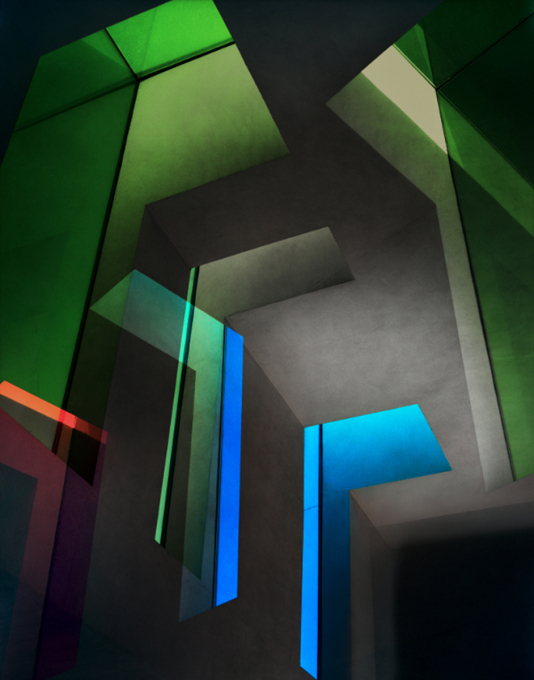
LH: Just as we are playing off the perception of the actual spaces in the Haus am Waldsee with our colour installation – i.e. taking colour across the thresholds of the villa’s rooms and making colour breaks within spaces – we also wanted to play off the viewer’s perception of the spaces of the villa and those contained within the images. We really liked the effect that these colour breaks have in bringing the works forward, so they are not glued to the wall. This happens because there is a “spatial break” effected by the colour change that occurs immediately behind the images – and this is most effective when there is also a strong tonal contrast as in the background to the image of Mimar Sinan’s Süleyman mosque in the first room: with a break from a very dark purplish brown to a very pale blue. This is then intensified by Ola's fragmentation of his image into four. Similarly with in the long Hagia Sophia image in the main room, the majority is installed in front of a dark greyish blue, whilst the left side of the image is set against the pale pink. This contrast of the very dark to very light highlights the multiple strong changes of tone that occur within Ola’s image here. Overall, the effect of colour in our spatial installation is that it turns into image, while Ola’s images become space.
Was the process different for responding to, or “framing”, Ola’s images of the Hagia Sophia and Sinan to those of your own projects and work?
LH: We thought it might be but in fact the process was not so different: the principles were the same. With the red and yellow wall behind the Biberach Laboratory image, our intuitive reaction was to risk a somewhat acid yellow, but then thought perhaps it should be warmer so as to tone with the warm yellow in the image and so not clash. But in the end the more vivid colour worked better, not directly relating to the yellow in the image. Concerning the red to green division behind the predominantly yellow Maciachini image, we realised that the “graphic strength” in Ola’s photograph could withstand – and conquer – a pair of very strong and contrasting colours behind it.
OK: I connect the process to that title of Andy Warhol’s book: From A to B and Back again. It’s from the A, the architecture: the buildings that I photograph, to B: Bilder or images – and back again: Louisa and Matthias read the images of their own buildings and made a colour concept from this. We do our own interpretation of each others work – for me the given thing was the building. For them it was the exhibition lay out and the selection of the work. What was nice, was that this collaboration became the main theme of the show. For me it was a unique way of communicating and exchanging ideas with Louisa and Matthias. We’ve known each other 10 years, and have had plenty of discussions, but this went far beyond that.
This dialogue was as important to the exhibition as my own input: even leaving the upstairs contrastingly unpainted and left as a white cube space, was something Matthias convinced me to do.
– interview by Rob Wilson




